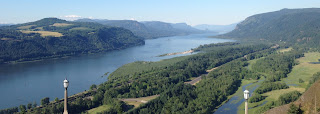[转载]Three Trending Computer Vision Research Areas, 从CVPR看接下来几年的CV的发展趋势


2) Mid-level patch discovery is a hot research topic. Saurabh Singh from CMU introduced this idea in his seminal ECCV 2012 paper, and Carl Doersch applied this idea to large-scale Google Street-View imagery in the “What makes Paris look like Paris?” SIGGRAPH 2012 paper. The idea is to automatically extract mid-level patches (which could be objects, object parts, or just chunks of stuff) from images with the constraint that those are the most informative patches.
Carl Doersch, Saurabh Singh, Abhinav Gupta, Josef Sivic, and Alexei A. Efros. What Makes Paris Look like Paris? In SIGGRAPH 2012. [pdf]
At CVPR 2013, it was evident that the idea of "learning mid-level parts for scenes" is being pursued by other top-tier computer vision research groups. Here are some CVPR 2013 papers which capitalize on this idea:
Blocks that Shout: Distinctive Parts for Scene Classification. Mayank Juneja, Andrea Vedaldi, CV Jawahar, Andrew Zisserman. In CVPR, 2013. [pdf]
Representing Videos using Mid-level Discriminative Patches. Arpit Jain, Abhinav Gupta, Mikel Rodriguez, Larry Davis. CVPR, 2013. [pdf]
Part Discovery from Partial Correspondence. Subhransu Maji, Gregory Shakhnarovich. In CVPR, 2013. [pdf]
3) Deep-learning and feature learning are on the rise within the Computer Vision community.
It seems that everybody at Google Research is working on Deep-learning. Will it solve all vision problems? Is it the one computational ring to rule them all? Personally, I doubt it, but the rising presence of deep learning is forcing every researcher to brush up on their l33t backprop skillz. In other words, if you don't know who Geoff Hinton is, then you are in trouble.
[转载]Three Trending Computer Vision Research Areas, 从CVPR看接下来几年的CV的发展趋势的更多相关文章
- Computer Vision: OpenCV, Feature Tracking, and Beyond--From <<Make Things See>> by Greg
In the 1960s, the legendary Stanford artificial intelligence pioneer, John McCarthy, famously gave a ...
- Computer Vision Tutorials from Conferences (3) -- CVPR
CVPR 2013 (http://www.pamitc.org/cvpr13/tutorials.php) Foundations of Spatial SpectroscopyJames Cogg ...
- paper 156:专家主页汇总-计算机视觉-computer vision
持续更新ing~ all *.files come from the author:http://www.cnblogs.com/findumars/p/5009003.html 1 牛人Homepa ...
- inception_v2版本《Rethinking the Inception Architecture for Computer Vision》(转载)
转载链接:https://www.jianshu.com/p/4e5b3e652639 Szegedy在2015年发表了论文Rethinking the Inception Architecture ...
- (转) WTF is computer vision?
WTF is computer vision? Posted Nov 13, 2016 by Devin Coldewey, Contributor Next Story Someon ...
- Computer Graphics Research Software
Computer Graphics Research Software Helping you avoid re-inventing the wheel since 2009! Last update ...
- Analyzing The Papers Behind Facebook's Computer Vision Approach
Analyzing The Papers Behind Facebook's Computer Vision Approach Introduction You know that company c ...
- Computer Vision Algorithm Implementations
Participate in Reproducible Research General Image Processing OpenCV (C/C++ code, BSD lic) Image man ...
- Computer Vision Resources
Computer Vision Resources Softwares Topic Resources References Feature Extraction SIFT [1] [Demo pro ...
随机推荐
- 荒废了很久的java以及微信公众平台今天拿起来看了看:这里有很好的教程
我的微信公众号刚刚起步: ,感兴趣可以关注一下. 关于java开发微信公众号有一个很好的教程博客:推荐一下:http://blog.csdn.net/lyq8479/article/details/8 ...
- iOS的多版本配置(版本分离,多环境配置)
前几天公司说一个客户要搞一个app,我说搞呗,跟我啥关系...他说,就是从咱的app上搞,什么都一样,就是一些logo啥的不一样.我一开始感觉,那就改改logo呗,后来一想,凑,百度推送,友盟统计,B ...
- 微信小程序-位置坐标
wx.getLocation(OBJECT) 获取当前的地理位置.速度. OBJECT参数说明: success返回参数说明: 示例代码: wx.getLocation({ type: 'wgs84' ...
- 使用scp在windows和Linux之间互传文件
转自:http://yangzhongfei.blog.163.com/blog/static/4610987520103141050918/ 为了进行系统维护操作,有时需要再windows和linu ...
- Jmeter学习(二)
1. Jmeter预置知识-http协议 应用层协议http,ftp,smtp 1) http之url http 超文本传输协议,基于请求与响应模式的,无状态,应用层协议. http url: htt ...
- red hat安装mysql二进制包
数据包命名格式解释 mysql-5.7.15-linux-glibc2.5-x86_64.tar.gz 黑色粗体表示为包名称 蓝色表示linux系统二进制包 红色表示构架 1.上传mysql- ...
- 【积累】发送验证码按钮倒计时js
注册的时候要发送验证码,就上网研究了一下,写了一个简单点的... jsp页面: <input type="button" id="testbtn" val ...
- R语言实战(二)数据管理
本文对应<R语言实战>第4章:基本数据管理:第5章:高级数据管理 创建新变量 #建议采用transform()函数 mydata <- transform(mydata, sumx ...
- Appium之python API
webdriver contexts(self) 说明:返回多个会话内容 使用:driver.contexts current_context(self) 说明:返回单个会话的内容 使用:driver ...
- lua实现私有函数
本文是原创文章,如需转载,请注明文章出处 要用lua实现私有函数,关键就是使用metatable的特性来实现. Test.lua: local v = {};v.x = 100;v.y = 200; ...
